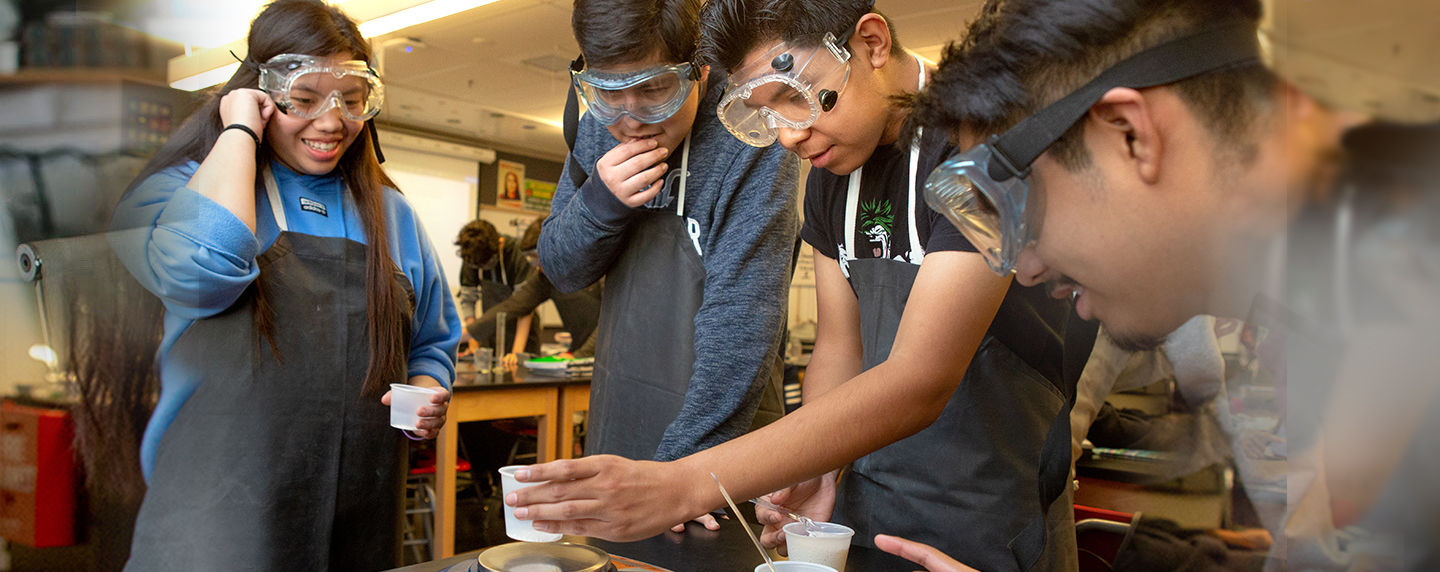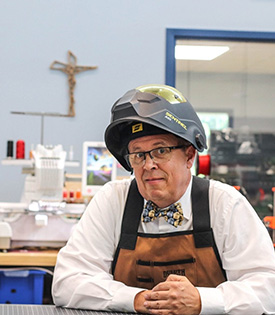
Stories of Impact
Back to In Action / Mark Westlake, Educator
Mark Westlake
Director of the Saint Thomas Academy Innovation Center
Mark Westlake is the Director of the Saint Thomas Academy Innovation Center in St. Paul, Minnesota. He also serves as Moderator of the Saint Thomas Academy Experimental Vehicle Team, is a Master Teacher for the Lemelson-MIT InvenTeam Program, a Notre Dame Trustey STEM Fellow, and a Lemelson-MIT Fellow, working to foster the inventive spirit in teachers and students across the United States.

Mark Westlake
The questions are more open, and there’s more than one right answer.
How has Invention Education shifted your teaching over the past 30 years?
It really changed the way that I saw education and teaching physics in the traditional way. The questions are more open, and there’s more than one right answer. And I think it’s the only place at school where students are encouraged to fail, because failure is such an important part of that process. In every one of their regular tests, the goal is to get the answers right on the first try. Now you know that doesn’t happen in real life.
What role does empathy play in this way of learning?
Empathy is really one of the keys to invention. Often we want students to build something fast, so they can figure out what doesn’t work, and then move on to trying to find solutions. They’re not used to solving problems for somebody else. But in invention, there has to be an end user — somebody that the invention is going to benefit. It’s important to be able to understand what the other person needs, and take input from that person and change it into a physical model or prototype, and then be able to get feedback on it.
Solutions come out of things that they learned in their math and science classes. It’s that eureka moment that teachers live for.
How do you see the effects of Invention Education on your students?
I think with any invention or engineering project, there are periods where the excitement is very high. But there are also long periods of frustration where things don’t work, and you hope for just a little glimmer of hope so that students can push on to the next step. Many times, solutions come out of some of those academic things that they learned in their math and science classes, like principles that we learned from lessons on energy, or trigonometry, or CAD drawings. It’s that eureka moment that teachers live for.
How do you see the interplay between formal and informal education spaces in Invention Education, and why are both important?
For a long time, anything involving invention happened after school — so right away, you had fewer students involved. One of the things I’ve loved about opening the Innovation Center at my school is that students can be in there at any time of the day. You’re giving more and more students that opportunity. But the first time I saw Invention Education was through the LMIT InventTeams program, where we were meeting teams from all over the country inventing in classrooms, after school, at the YMCA, Boy Scouts and Girl Scouts. There are people in nontraditional educational settings who are passionate about invention, and more importantly, passionate about seeing students succeed.
How does Invention Education motivate you as a teacher?
I think there has to be a vision of what your students are getting out of it. Invention Education is a way to help teachers help their students succeed. For me, it’s about wanting to see our kids invent something that’s going to fly in a plane for NASA. When I go home at night, that’s the kind of thing that makes me feel good.
